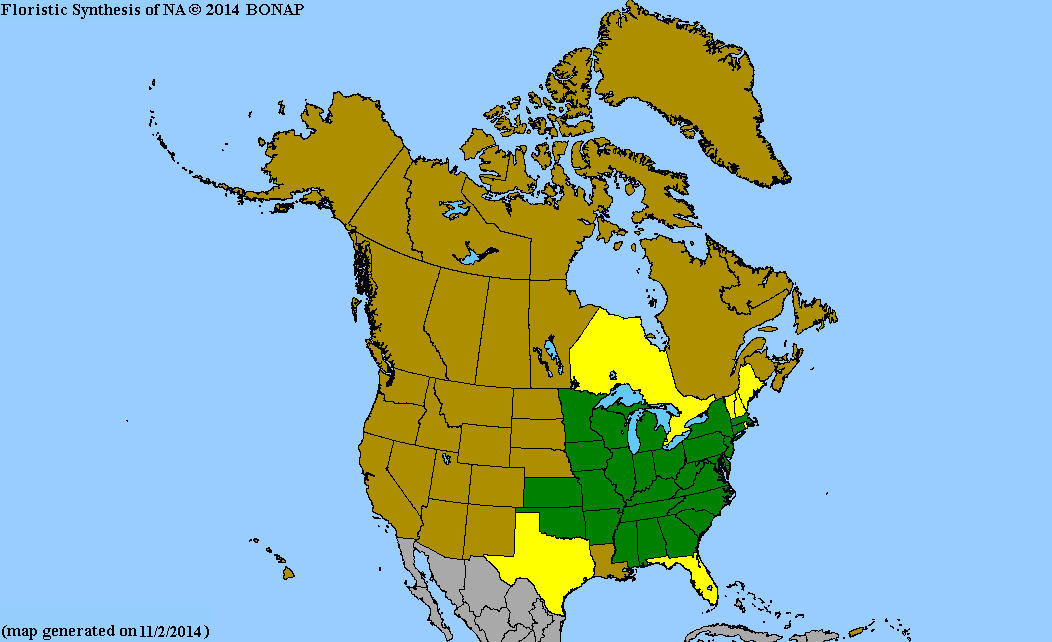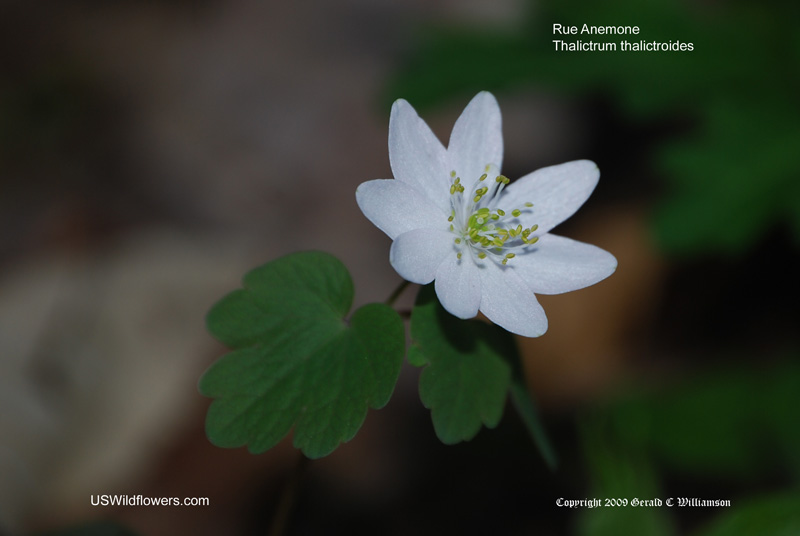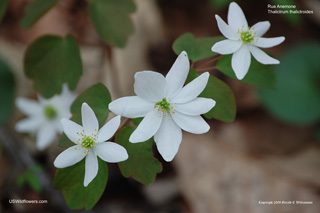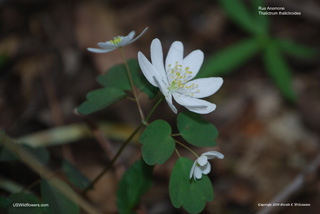Rue Anemone, Anemone Meadow-rue - Thalictrum thalictroides
|
Thalictrum thalictroides - Rue Anemone, Anemone Meadow-rue. Low-growing spring wildflower of the eastern United States; less than a foot tall. Blossoms are pink to pure white with distinctively-shape pistils.
Found in:
AL, AR, CT, DC, DE, FL, GA, IA, IL, IN, KS, KY, MA, MD, ME, MI, MN, MO, MS, NC, NH, NJ, NY, OH, OK, PA, RI, SC, TN, TX, VA, VT, WI, WV
Journal Articles Referencing Meadow-rue
Leave comments on Thalictrum thalictroides at this link. | 
Distribution of Thalictrum thalictroides in the United States and Canada:

Map courtesy of The Biota of North America Program.
Map color key
Search Our Database: Enter any portion of the Scientific, Common Name, or both.
Do a general Google search of the entire site:
#ad
 Follow USWildflowers on Twitter
| | Site: The Pocket at Pigeon Mountain, Walker County, GA Date: 2009-March-18 | Photographer: Gerald C Williamson
Nikon D60
1/125f/5.6 ISO100
Nikon Nikkor AF-S 55-200mm 4-5.6G ED
200mm (300 equiv) Flash: Yes | | Thalictrum thalictroides doesn't have any petals, but rather has 6 to 10 white or pinkish showy sepals. It has many thin-filamented stamens above a cluster of several green urn-shaped pistils. | | 
| | Site: The Pocket at Pigeon Mountain, Walker County, GA Date: 2008-April-02 | Photographer: Gerald C Williamson
Nikon D40
1/125f/8 ISO220
Nikon Nikkor AF-S 55-200mm 4-5.6G ED
200mm (300 equiv) | | Rue Anemone will usually have multiple thin-stemmed blossoms rising above the upper leaves. It can easily be confused with False Rue Anemone, which looks similar, but False Rue Anemone will usually have 5 white sepals (no petals), and the leaves are deeply lobed. | | Click on the photo for a larger image

| | Site: The Pocket at Pigeon Mountain, Walker County, GA Date: 2009-March-21 | Photographer: Gerald C Williamson
Nikon D60
1/125f/5.6 ISO100
Nikon Nikkor AF-S 55-200mm 4-5.6G ED
200mm (300 equiv) Flash: Yes | | Rue anemone's blossoms rise above a whorl of leaves, each with three leaflets which have slight indentations, forming 3 lobes per leaflet. The plant also has basal leaves, not shown in this photograph | | Click on the photo for a larger image

|
|
|
| |
| #ad
|
|





